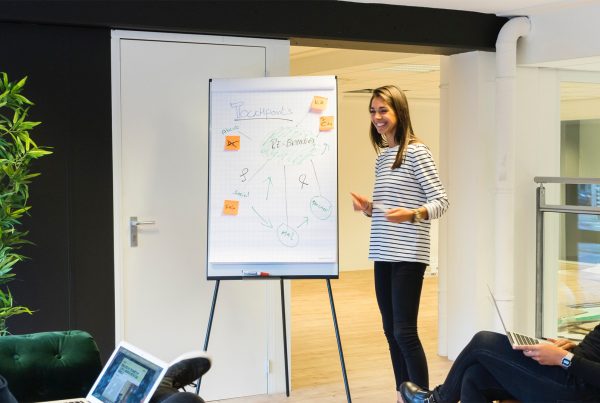Timeboxing is a simple, yet effective way for you to accomplish your daily tasks without feeling overwhelmed and while drastically improving productivity. The theory behind it is quite simple and mastering it doesn’t take special skills. It is a practice that anyone, from business executives to busy parents, can use to get more done with less stress. Using a timeboxing planner can help with the process.
What Is Timeboxing?
Timeboxing or “time blocking” is a time-management practice that allows you to set aside a box or block of time in your schedule to complete a specific task. It gets its name from the boxes that are used to draw out the block on your planner or daily calendar. Once your calendar is filled in, there are boxes dedicated to specific tasks that help you stay on track with important tasks.
The reason timeboxing works is described best by Parkinson’s Law, which states, “work expands to fill the time available for its completion.” In other words, the longer you allow for a task to be completed, the longer you will take to complete the task.
Timeboxing increases meeting productivity by helping you stay on track and ensuring that important tasks are finished on time and all other tasks are completed in a timely manner.

Hardboxes vs. Softboxes
The key to utilizing timeboxing lies in the boxes. In general, there are two types of boxes in timeboxing; hard and soft. Each has its own benefits and will help you better manage your day when used correctly.
Hardboxing
If you have a critically important task that has a hard deadline, you will need to use a hardbox for this task in your planner or meeting agenda. Hardboxes should be your main focus the moment they begin. You will need to drop everything and focus on the task.
Example of When to Use Hardboxing
For example, you may need to complete a Powerpoint by your 2:00 meeting. If you know that it will take one hour or less to complete, you can use a hardbox to block out the time slot between 1:00 and 2:00 for that project.
Regardless of what you are working on at 12:59 when the clock hits 1:00, you must drop everything and work on your Powerpoint to complete it by the deadline.
Softboxing
Softboxing should be used for important tasks that have a more flexible time frame. If the task needs to be completed by the end of the workday but doesn’t have a specific timeline, it can be scheduled in a softbox. If you run over or start late, it doesn’t matter. You can pick up your work in another softbox time period.
Example of When to Use Softboxing
For example, you could box in your lunch from 11:00 to 12:00. If a meeting runs over, you can simply move your lunch or take a shorter lunch to make up for the time lost.
Blending Boxes
Blending boxes combine the best of both worlds with both rigidity and flexibility that occurs naturally in our daily lives. It’s not uncommon in the workplace or your personal life for unexpected events to arise. Scheduling softbox time periods allow you to deal with these issues but stay on task when it matters most.
Example of Blending Boxes
Let’s return to the Powerpoint presentation mentioned in “Hardboxing.” It’s not the best idea to procrastinate until the last minute to create a Powerpoint. Therefore, you may choose to schedule a 30-minute soft block prior to the meeting in order to compensate for unexpected occurrences.
In this example, if you need one hour to check your email, you could move the Powerpoint project forward half an hour and schedule 30 minutes for email prior to the hardbox and 30 minutes following the hardbox. The email can be shifted to another softbox, if necessary, in order to complete the most important task without any disasters.

Perfecting Your Timebox Management
In order to implement timeboxing effectively, you have to learn how long it really takes for you to complete specific tasks when you focus on your work.
Starting Out:
To start out, you may choose to use all softboxes and attempt to complete each task as efficiently as possible. Take note if a task takes more or less time or than the allotted box allows and adjust your schedule daily until you can complete the tasks within the box.
Incorporating Timeboxing Into Your Routine
After you become used to completing your tasks in a specific time frame, you can start creating hardboxes for the most important tasks on your schedule. Remember not to procrastinate and to use timeboxing to get your most important and challenging tasks out of the way.
It will take some time for you to get your patterns down so that you will be able to box your time effectively. However, you will still have immediate results from day one.
A Simple Productivity Booster
Timeboxing is certain to improve your productivity more and more as you master it. It is a simple method that you can use to get more done and remove the stress from procrastination and time-wasting activities.
Yoyomeeting Helps You Manage Your Meetings
For your next meeting, use yoyomeeting. Our meeting minutes software for Office 365 helps with all facets of meetings, including meeting planning, recording, and meeting recaps. Learn more about how it works here, or start your 2-week free trial:







